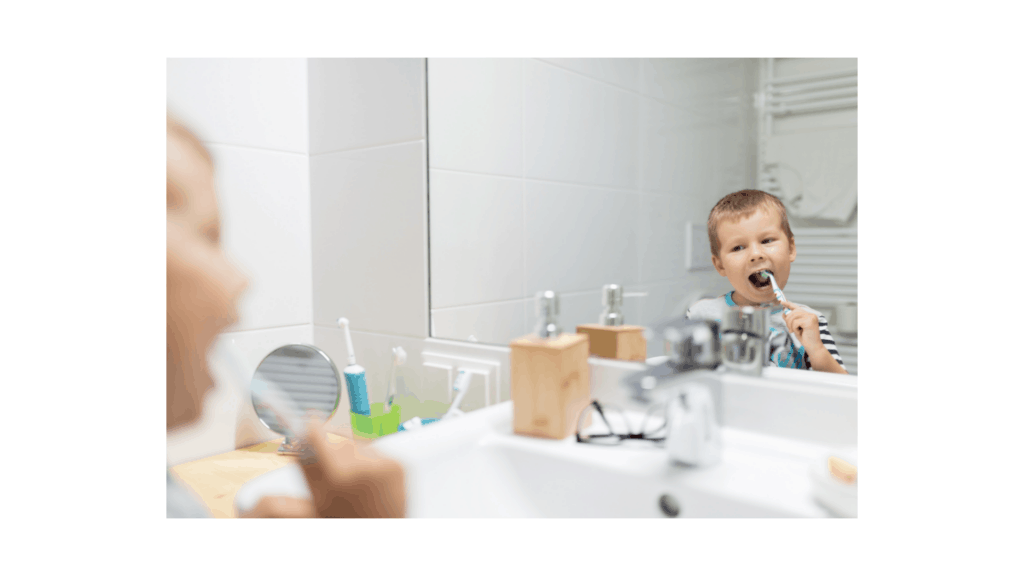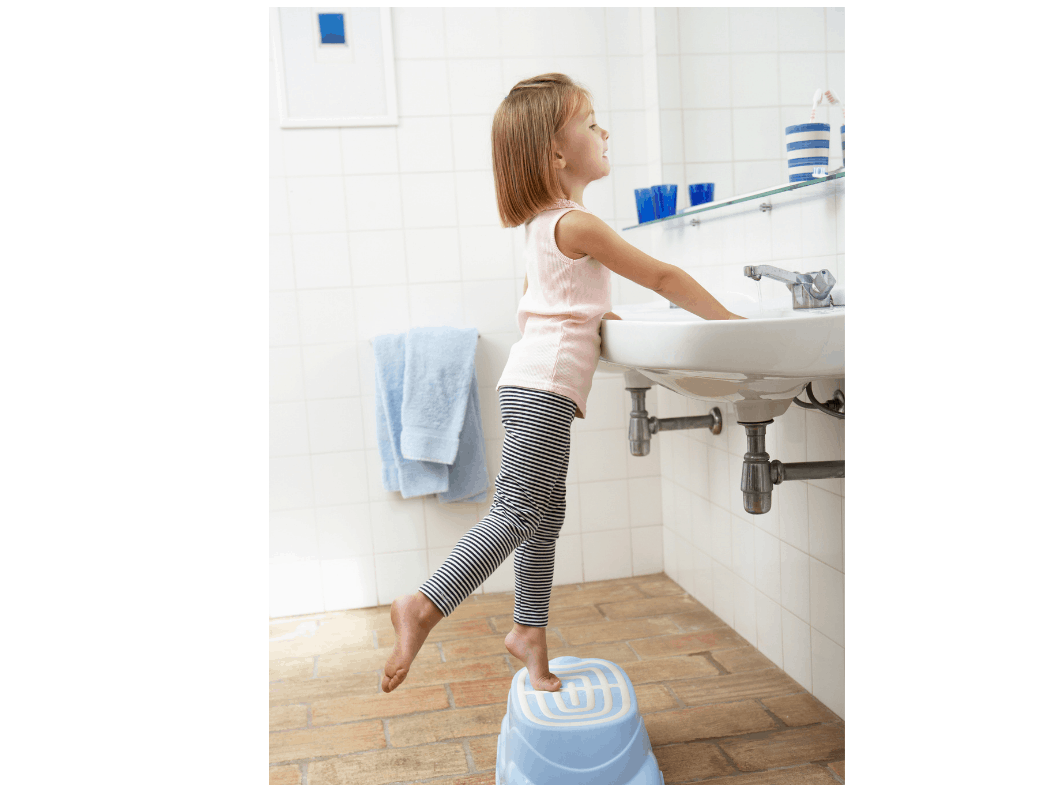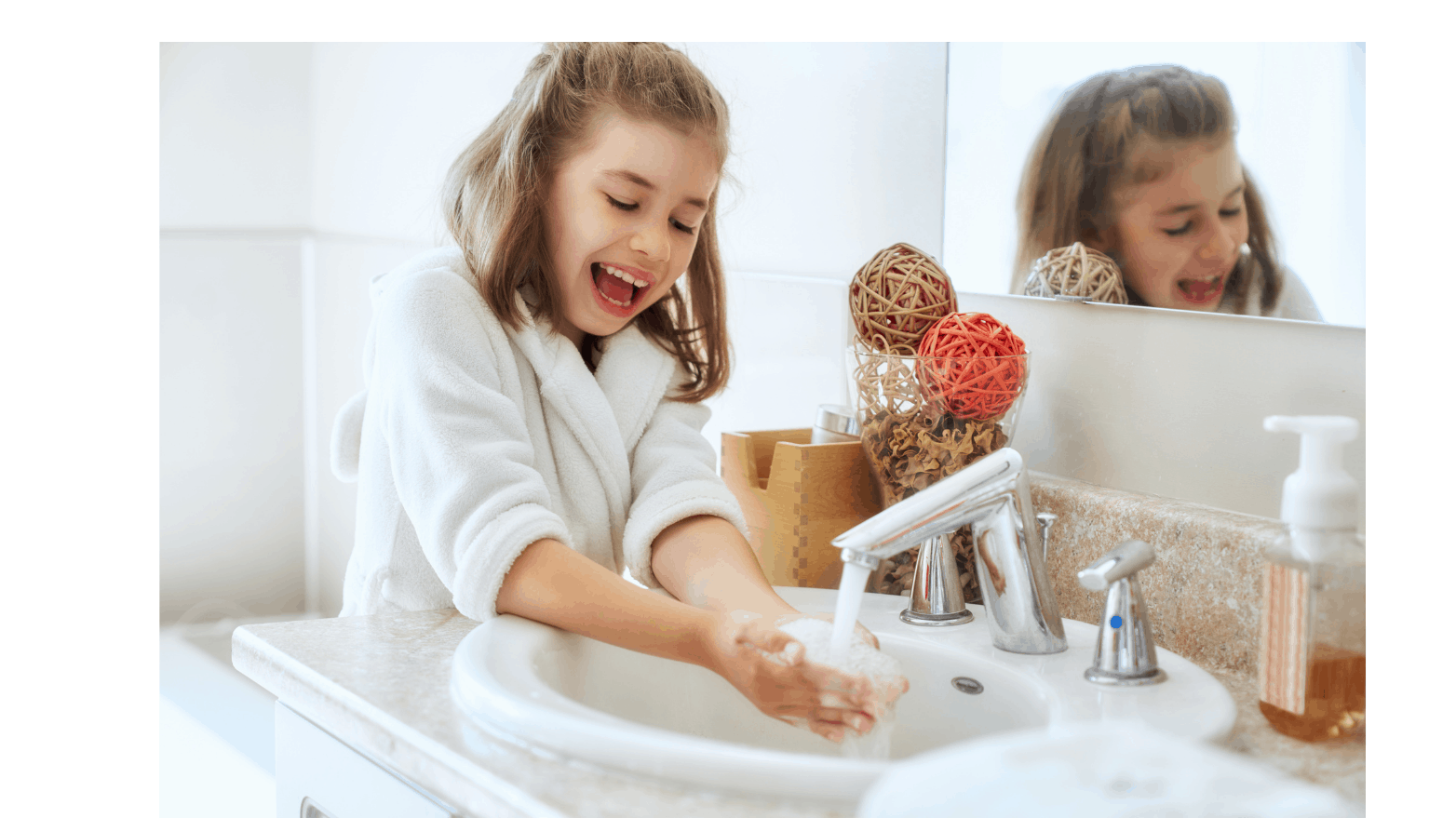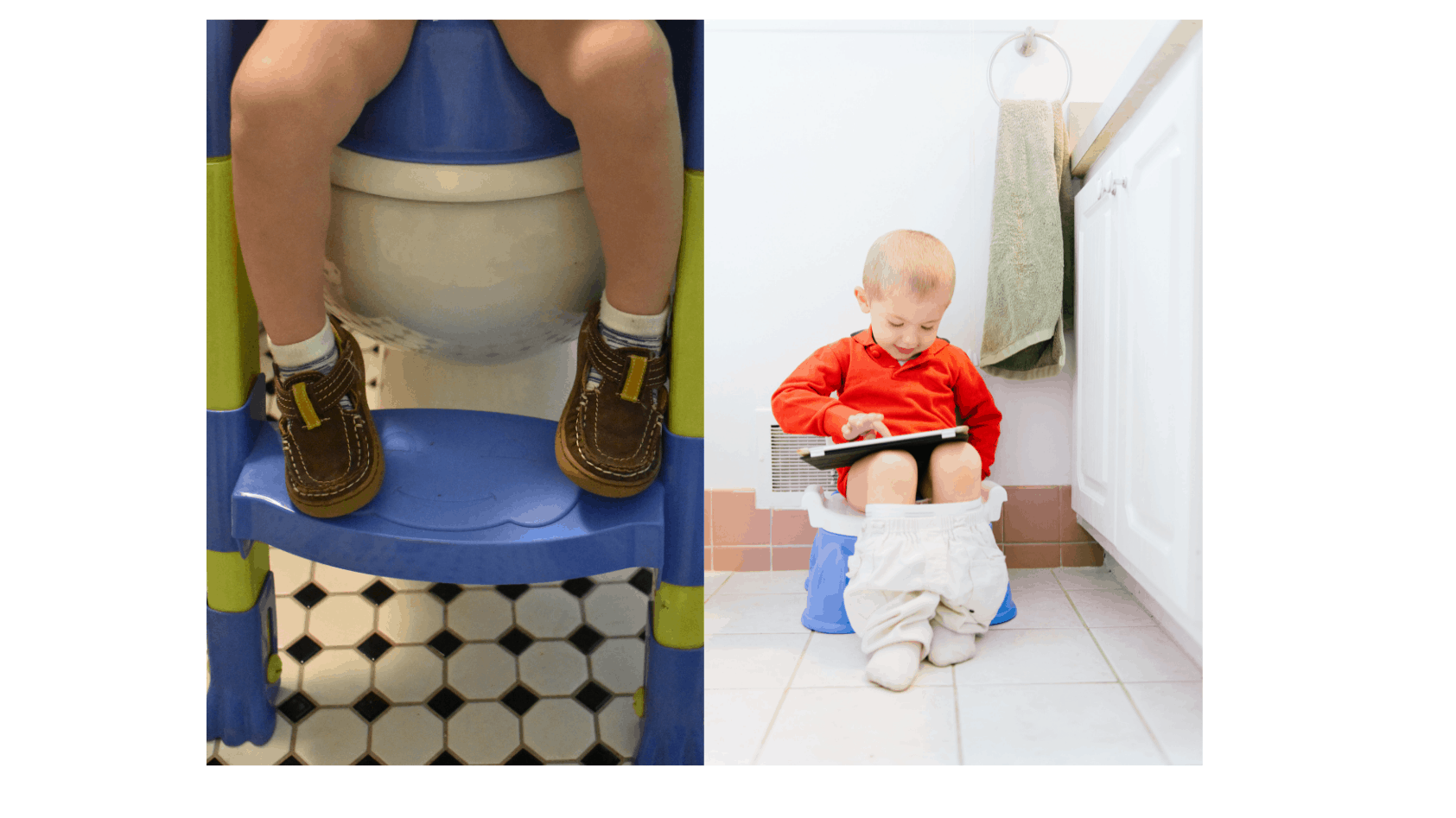From Montessori playrooms to bedrooms and kitchens, we’ve covered most of the bases when it comes to incorporating the Montessori method in your home. But we simply cannot forget about the bathroom! So, here’s a short and simple guide for making your bathroom Montessori-friendly.
Whether it be practicing their personal hygiene or potty training, there’s some pretty essential learning that happens in this room. By implementing the following ideas, your little ones will have the tools needed to accomplish these tasks themselves – Montessori learning style!

Montessori method in the bathroom
A Montessori bathroom is one that encourages independence and self-care and is highly accessible for your little one.
Of course, how much you can implement Montessori elements into your bathroom depends entirely on the space you have and the means you have to make changes. This guide isn’t here to suggest an entire overhaul! It’s just to give ideas for how to create a child’s bathroom that encourages learning and the care of self.
Self-care
By designing your bathroom with Montessori principles in mind, you can easily create a space that fosters your child’s independence while teaching them about the basics of care of self. Once they learn how to do tasks like hand-washing, teeth-brushing, and going to the potty by themselves, your children will feel so proud and confident.
Another super important learning opportunity here is the building of self-esteem. Encouraging this is critical for toddlers, and doing so will set them up for greater success as they grow. Taking proper care of their bodies through practicing good hygiene will undoubtedly make them feel good about themselves and their appearance, too!

Step stools
Ideally, the child would have a bathroom that is completely their size, where everything was at the child’s eye level. But realistically, this isn’t likely possible! So, if you can’t have everything at their level, a step stool helps bring them up to the appropriate height.
That’s why step stools are a staple in many child-friendly bathrooms. Allowing your little ones to be at the correct height to wash their hands themselves gives them the autonomy which is crucial for developing their independence.
If possible, having one stool appropriately sized for the faucet and one for the toilet is ideal. This way, your child doesn’t need to be picked up and put onto the toilet while potty training – They can do it all by themselves!

Hand washing
While teaching your little one how to wash their hands, it’s important that they can access the tools themselves… Which is super simple in the bathroom! All you really need to do is make sure they can reach the sink, soap, toothbrush and towels, and they’re ready to go!
You can also get a faucet extender to help them with independently washing hands and brushing teeth.
For kiddos that love playing in the dirt, you could also have a nail brush available to help clean alongside washing hands.
Bath time
For bath time, it should be easy for them to find all that they need for bathing. Letting them have their own towel hook or spot on the shelf for bubbles and shampoo will not only make them feel in charge of their routine but makes it easier for children to put back their supplies after use, too. Remember – if you give them their own hook, be sure that it’s at their height so they can reach it without assistance!
Bath toys
For bath toys, try to keep it simple. Montessori toys emphasize quality over quantity, after all. While choice empowers children, too many choices can be overwhelming. Try having a tray with a few items that you routinely switch out to give them the freedom of choice. This will keep bath time fun and reduce clutter on the shelf as well!
There are lots of fun toys that are helpful for development, too. You could include bath toys with spouts so they can scoop and pour water, stacking cups, realistic creatures, numbers and letters… The list goes on! Th
As for organization, have their toys in the bath area where they can reach them. Accessibility is a big part of the Montessori approach (in every area of the household)!
Teeth and hair brushing
Like I’ve suggested in other articles, Maria Montessori instructs us to place a child’s item where they can see and reach them. This is no less true in the bathroom!
Whether this is their own basket in the cupboard or their very own drawer, accessibility is paramount for empowering your toddler to take charge of their own routine. Things like their toothbrushes, toothpaste, and hair brushes/accessories should be kept where your child can get to them easily.
If you’re making toothpaste available, you may want to pre-portion some out, though! This avoids messy accidents and going through a whole tube of toothpaste in one go.
Mirrors
Full-length mirrors are amazing for children. They significantly increase self-awareness and actively promote body confidence. Another bonus? When kids can watch themselves get dressed, they can better learn how to self-dress!
For in the bath, you can also put a suction cup mirror into their bath basket. This way they can see themselves while washing, helping them to be more effective at cleaning themselves.
Here’s a tip for teaching them to self-dress (and for other skills they’re learning at this stage): Once a child has picked their clothes, I demonstrate how to put the item on (if needed). Then, I always say to the child “You try first, then I will help you if you need it!” This gives them reassurance that they can ask for help, but teaches them to try themselves first.
Sometimes this is hard when you’re in a rush, but trust me, it works! Learning anything takes practice, and self-dressing is no exception. Another common statement I hear is “I can’t!” An empowering response to this is “You can’t – Yet. Keep trying and you will learn how to!”

Potty training
There are two essentials for potty training that aligns with Montessori principles: A stool for getting up to the potty themselves, and a potty chair so that they are comfortable while they learn to properly use the toilet. Another important thing – Make sure the toilet paper is within reach!
Potty seat
If you are training a young child, give a small potty a try (like the one on the right in the photo above). They are much less intimidating than a regular toilet, making them an excellent starting point for toddlers that are a bit apprehensive about the process. Another great thing about them is that you can take them on the go – Making potty training possible even for busy families!
Other ideas
There are lots of ways that you can maximize your child’s development by introducing Montessori principles in the home environment. Here are a couple of other ideas you might want to consider:
Cleaning
Teaching little ones to clean the spaces they use is a part of teaching kiddos to be independent. Though you may need to do a second clean, it’s great practice for them to try!
Try having their own cleaning basket or shelf in the bathroom cabinet with cleaning supplies for them to use. In that you might give them access to a toilet bowl cleaner, cleaning wipes, and safe cleaners that can be used (with parent supervision, of course!).
Light switch extender
Having a light switch extender lets kiddos safely turn the lights on and off as they need to. It also prevents them from trying to climb up and use the light (which is probably unsafe to do)!
Face washing
Something else we didn’t touch on is face washing. To encourage this as a daily routine, you could provide a basket with their own small bar of soap and their very own washcloth.
Though not for face washing, I’d also suggest having a small hand towel available. This can be used for wiping their faces and hands, or cleaning up messes and spills.
Conclusion
Essentially, the main focus of creating a Montessori-friendly bathroom is to increase independence and foster the learning of self-care and proper hygiene. As with any room designed in this style, a Montessori bathroom should allow your child to do as many self-directed tasks as possible!
Doing so greatly enhances their confidence and will make them feel proud to be a “big kid” as they have to ask for less assistance from adults. Toilet training, using a bathroom sink for hand-washing and teeth brushing and a solid bath routine are all important skills learned in this room.
By keeping all of the items your kids will use within their reach, they will feel much more independent. Also, they can start taking ownership over routines they will use for the rest of their lives.

Leave a Reply